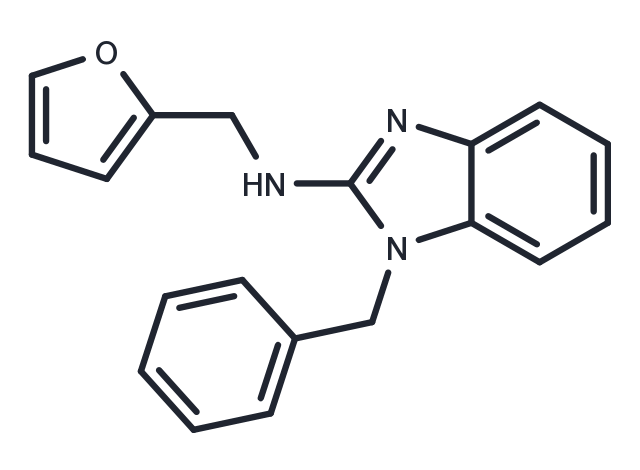Powder: -20°C for 3 years | In solvent: -80°C for 1 year


AC1903 is a specific inhibitor of TRPC5 channel, and has been shown to suppress severe proteinuria and prevent podocyte loss.

| Pack Size | Availability | Price/USD | Quantity |
|---|---|---|---|
| 5 mg | In stock | $ 53.00 | |
| 10 mg | In stock | $ 91.00 | |
| 25 mg | In stock | $ 198.00 | |
| 50 mg | In stock | $ 344.00 | |
| 1 mL * 10 mM (in DMSO) | In stock | $ 59.00 |


| Description | AC1903 is a specific inhibitor of TRPC5 channel, and has been shown to suppress severe proteinuria and prevent podocyte loss. |
| Targets&IC50 | TRPC5 current (HEK-293 cells):14.7 μM (IC50) |
| In vivo | AC1903, that specifically blocks TRPC5 channel activity in glomeruli of proteinuric rats.?Chronic administration of AC1903 suppressed severe proteinuria and prevented podocyte loss in a transgenic rat model of FSGS.AC1903 also provided therapeutic benefit in a rat model of hypertensive proteinuric kidney disease.?TRPC5 activity drives disease and that TRPC5 inhibitors may be valuable for the treatment of progressive kidney diseases[1]. |
| Animal Research | Twice-daily intraperitoneal injections of AC1903 (50 mg/kg) for 7 days suppressed severe proteinuria in AT1R Tg rats (Advanced)[1] |
| Molecular Weight | 303.36 |
| Formula | C19H17N3O |
| CAS No. | 831234-13-0 |
Powder: -20°C for 3 years | In solvent: -80°C for 1 year
DMSO: 32.5 mg/mL (107.13 mM)
You can also refer to dose conversion for different animals. More
bottom
Please see Inhibitor Handling Instructions for more frequently ask questions. Topics include: how to prepare stock solutions, how to store products, and cautions on cell-based assays & animal experiments, etc.
AC1903 831234-13-0 Membrane transporter/Ion channel TRP/TRPV Channel Inhibitor glomerulosclerosis proteinuria inhibit TRP Channel ros focal segmental Transient receptor potential channels AC 1903 FSGS kidney disease podocyte loss AC-1903 HEK-293 inhibitor
